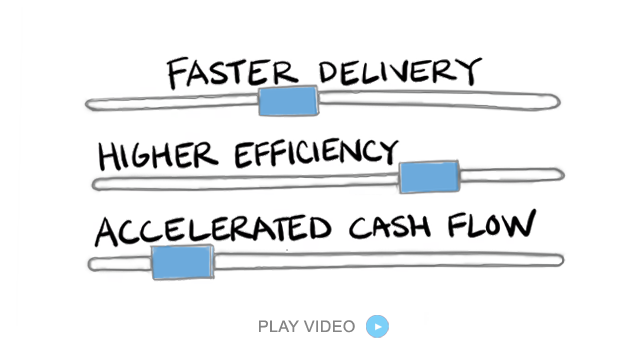
Streamlining Innovation: The Impact of Cloud PLM on Medical Manufacturing Excellence
Manufacturing IT Managers face unique challenges in managing product development lifecycles (PDLC), including stringent regulatory requirements, complex product configurations, and tight timelines for innovation.
The adoption of Cloud Product Lifecycle Management (PLM) systems has emerged as a transformative solution to address these challenges, especially when integrated with powerful scheduling tools like PlanetTogether and enterprise platforms such as SAP, Oracle, Microsoft, Kinaxis, or Aveva.

Understanding the Role of Cloud PLM in Medical Manufacturing
A Cloud PLM system provides a centralized platform to manage the entire lifecycle of a product—from ideation and design to production and end-of-life. Unlike traditional on-premise systems, Cloud PLM offers scalability, real-time collaboration, and accessibility across geographies, making it particularly well-suited for medical manufacturing facilities where teams often span multiple locations.
Key benefits of adopting Cloud PLM include:
Enhanced Collaboration: Teams across R&D, production, and quality assurance can work on a unified platform, reducing silos and streamlining communication.
Regulatory Compliance: Medical manufacturing is subject to rigorous compliance requirements such as FDA’s 21 CFR Part 11. Cloud PLM systems come equipped with tools to ensure traceability, documentation, and audit-readiness.
Speed to Market: By enabling real-time updates and efficient change management, Cloud PLM helps bring products to market faster.
Cost Efficiency: Cloud-based solutions reduce the need for extensive IT infrastructure and maintenance, freeing up resources for innovation.


Integration of PlanetTogether with Cloud PLM
When paired with PlanetTogether, a Cloud PLM system becomes a powerhouse for optimizing the PDLC. PlanetTogether’s advanced scheduling and production planning capabilities complement the lifecycle management features of Cloud PLM, creating a seamless workflow from design to production.
For example, consider a scenario where a medical manufacturing facility develops a new implant device. The design phase in the PLM system generates a bill of materials (BOM) and process plans. When integrated with PlanetTogether, this data flows directly into the scheduling system, allowing planners to:
Visualize production timelines and resource availability.
Identify potential bottlenecks or conflicts in real-time.
Adjust schedules dynamically based on changes in design or regulatory requirements.
This integration ensures that manufacturing schedules align perfectly with the latest product specifications, reducing errors and enhancing efficiency.

Leveraging Enterprise Platforms for Greater Efficiency
Integrating Cloud PLM and PlanetTogether with enterprise platforms like SAP, Oracle, Microsoft, Kinaxis, or Aveva amplifies their capabilities. Here’s how these integrations can drive success in medical manufacturing:
SAP Integration: SAP’s ERP and supply chain management modules are widely used in medical manufacturing. Integrating Cloud PLM with SAP ensures that design data flows seamlessly into procurement, production, and distribution processes. PlanetTogether’s scheduling engine further refines this workflow by optimizing production schedules based on real-time data from SAP.
Oracle Integration: Oracle’s robust database and cloud applications provide a solid foundation for managing complex datasets. When paired with a Cloud PLM system, Oracle facilitates better data analytics and reporting. PlanetTogether’s ability to incorporate Oracle’s insights into production schedules ensures data-driven decision-making at every stage of the PDLC.
Microsoft Integration: With tools like Microsoft Dynamics and Azure, medical manufacturers can harness the power of AI and machine learning. Integrating Cloud PLM with Microsoft solutions enables predictive analytics and smarter resource allocation. PlanetTogether leverages these insights to create schedules that minimize downtime and maximize efficiency.
Kinaxis Integration: Kinaxis excels in supply chain planning and demand forecasting. When integrated with Cloud PLM, Kinaxis’ insights into market demand and inventory levels inform design and production decisions. PlanetTogether’s scheduling capabilities ensure that these decisions translate into actionable production plans.
Aveva Integration: Aveva’s focus on digital transformation and industrial software aligns well with Cloud PLM’s objectives. Integrating these systems creates a digital thread that connects design, engineering, and manufacturing. PlanetTogether’s role in this ecosystem is to provide real-time scheduling adjustments based on Aveva’s operational insights.

Overcoming Adoption Challenges
While the benefits of Cloud PLM are clear, adopting such systems in a medical manufacturing setting is not without challenges. These include:
Data Security: Ensuring the security and confidentiality of sensitive design and patient-related data is paramount. Cloud PLM vendors must comply with standards like ISO 27001 and HIPAA.
Change Management: Transitioning from legacy systems to a Cloud PLM requires careful planning and stakeholder buy-in.
Integration Complexity: Seamlessly connecting Cloud PLM with existing tools like PlanetTogether and enterprise platforms requires robust APIs and expertise.
As the medical manufacturing industry continues to innovate, the role of Cloud PLM will only grow in importance. Advanced technologies such as AI, IoT, and digital twins are increasingly being incorporated into PLM systems, further enhancing their capabilities.
By adopting Cloud PLM and integrating it with PlanetTogether and enterprise platforms, medical manufacturing facilities can:
Accelerate innovation cycles.
Ensure compliance with evolving regulations.
Optimize resource utilization and production schedules.
Gain a competitive edge in a demanding market.
For Manufacturing IT Managers, the journey to Cloud PLM adoption represents an opportunity to redefine the product development lifecycle and set new benchmarks for efficiency and innovation. Embracing this transformation today will lay the foundation for success in the future.
Are you ready to take your manufacturing operations to the next level? Contact us today to learn more about how PlanetTogether can help you achieve your goals and drive success in your industry.

























LEAVE A COMMENT